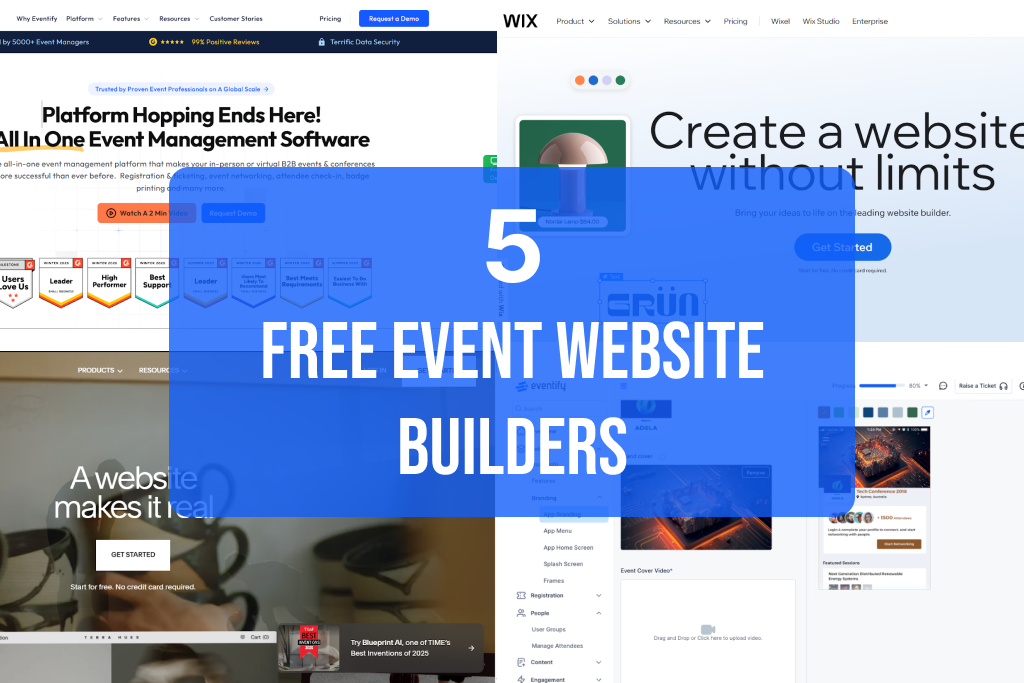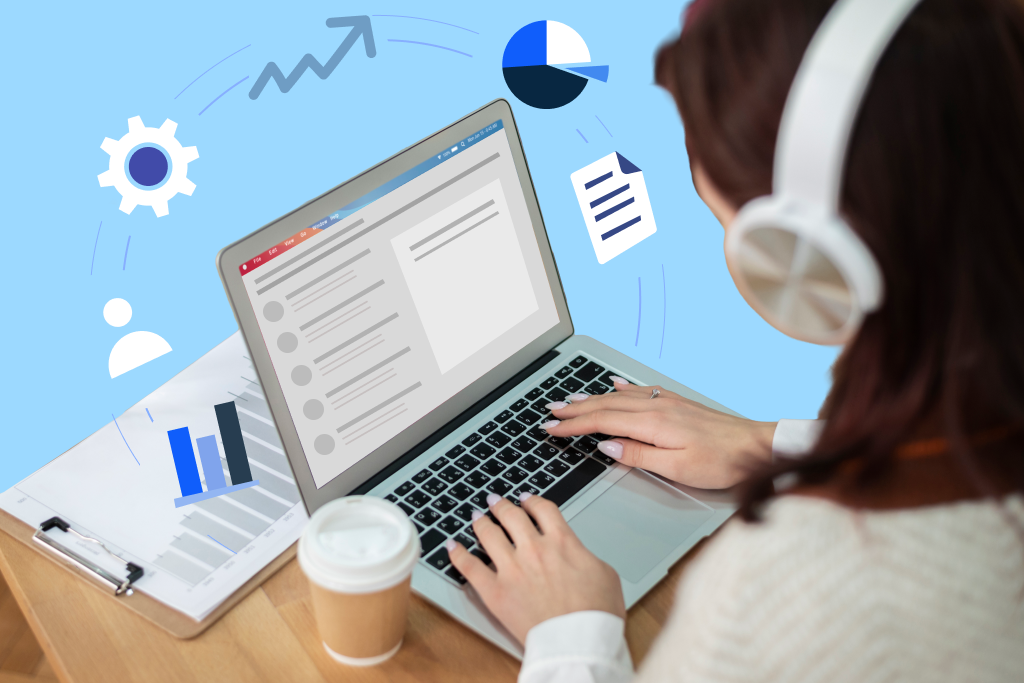A press release is a strategic communication tool used to shape public perception and generate interest around a particular event, product, or brand. Crafting a compelling press release for your event can significantly boost attendance and generate excitement.
Some of The Key Characteristics of Event Press Release
Purpose: Aims to generate media attention and public awareness about a newsworthy event, product launch, company achievement, or other relevant information.
Target Audience: Primarily media outlets like newspapers, magazines, online publications, and TV/radio stations. However, it can also indirectly reach the general public through media coverage.
Content: Press releases typically follow a specific format that includes essential elements like a dateline, headline, newsworthy hook, details about the announcement (who, what, when, where, why), and contact information.
Distribution: Press releases are traditionally distributed via email to journalists and media outlets relevant to the topic. In the digital age, newswire services are often used to disseminate press releases widely.
Key Factors for Writing An Event Press Release
A compelling introduction for your event press release is crucial to capture media attention and get readers excited. Here are some elements to consider
1. Hook Them Early
- Start with a newsworthy angle: Don't just announce your event. Highlight what makes it unique and relevant to the target audience. Is there a renowned speaker? A cutting-edge topic? A special format?
- Intrigue with a strong statement: Instead of a bland announcement, consider a thought-provoking statement related to the event's theme.
- Focus on attendee benefits: Don't just describe the event; showcase the value it offers. Will attendees gain valuable knowledge? Build crucial connections? Enjoy a unique experience?

2. Briefly Introduce the Event
- Identify the event: Mention the event name and type (conference, workshop, expo, etc.).
- Establish credibility: Include the name of your organization (the event organizers).
- Hint at the time frame: Briefly mention the date or a date range to spark curiosity.
Here are some examples to illustrate different approaches
- Newsworthy Angle: "Pioneering AI Experts to Gather at the 'AI for Social Good' Summit in New York City"
- Intriguing Statement: "The Future of Sustainable Food Production Takes Center Stage at Agritech Expo 2024"
- Focus on Benefits: "Empower Your Career: Upskill and Network at the Women in Leadership Conference"
3. Transition Smoothly
After grabbing attention, seamlessly transition into the body of your press release. Briefly elaborate on the details mentioned in the introduction, piquing interest for further information.
By following these tips, you can craft an engaging introduction for your event press release that sets the stage for a compelling announcement.
Writing a press release for an event is a structured process aimed at informing journalists, bloggers, and the media about your upcoming event in a clear and compelling manner.
"A well-crafted event press release is your ticket to securing media coverage. It's about clearly communicating the event's unique selling points and generating excitement among journalists." - Melissa Abbott, CEO of Eventive Marketing & PR

How to Write a Press Release For An Event?
1. Header
The headline of your press release is crucial as it’s the first thing journalists will see. It should be concise (preferably under 100 characters) yet informative, capturing the essence of your event and why it’s newsworthy. Include the event name, key details (like location or theme), and a hook that grabs attention.
Example
"Tech Innovators Summit 2024 to Explore Future Trends in AI and Robotics"
2. Dateline
Begin your press release with a dateline that includes the city and state where the event is taking place, followed by the date of issuance. Establish credibility and timeliness by including the city, state of origin, and the release date in a clear format like "FOR IMMEDIATE RELEASE - New York, NY - July 10, 2024."
3. Introduction Paragraph
The introduction paragraph should succinctly answer the who, what, where, when, why, and how of the event. It sets the tone and provides essential information upfront to grab the reader’s attention.
Example
"The Tech Innovators Summit 2024, a leading conference in the field of technology and innovation, is set to gather global thought leaders and industry pioneers in New York City on September 15-16, 2024. This year’s summit will explore groundbreaking advancements in artificial intelligence (AI) and robotics, offering unparalleled insights into the future of technology."
4. Body Paragraphs
Headline (80 characters or less): Grab attention with a concise and informative headline that encapsulates the event's essence. Consider using keywords relevant to your target audience and the event theme.
Newsworthy Hook: Go beyond basic announcements. Highlight what makes your event unique and newsworthy. Is there a renowned speaker, a cutting-edge topic being addressed, or a special format that sets it apart?
Who, What, When, Where, Why: Provide a clear picture of the event by answering these essential questions
- Who: Identify the organizers behind the event (your company name or organization).
- What: Specify the event's name and type (conference, workshop, expo, concert, etc.).
- When: Clearly state the date and time of the event.
- Where: Pinpoint the event's location (city, state, venue name).
- Why: Articulate the purpose and significance of the event. What value does it offer to attendees and the community?
Details and Highlights: Expand on the core information to provide a well-rounded picture:
- Delve into the specific activities, workshops, or sessions offered that cater to the target audience's interests.
- If you have notable speakers or guests confirmed, mention their names and credentials to pique interest.
- Provide details about the venue, including accessibility and parking information, to address logistical concerns.
- Clearly outline the registration process or provide a website link for easy access to further information.
- Don't just list features; emphasize the benefits for attendees. Highlight the learning opportunities, networking potential, or entertainment value the event offers.
- Quote (Optional): Infuse your press release with personality and credibility by including a quote from a key figure. This could be an event organizer, a speaker, or a sponsor to add credibility and human interest to the release.
Expand on the information provided in the introduction. Include details such as:
- Key Speakers and Sessions: Highlight keynote speakers, notable panelists, and sessions that attendees can look forward to.
- Event Highlights: Mention any special features, demonstrations, or networking opportunities that make your event unique.
- Purpose and Benefits: Explain the purpose of the event and the benefits attendees will gain from participating.
Example
"Attendees can expect engaging presentations from top executives at leading tech companies, including discussions on the ethical implications of AI, the latest advancements in robotics for healthcare, and interactive workshops on coding and machine learning. With networking sessions designed to foster collaboration among innovators, the summit aims to inspire and empower attendees to shape the future of technology."
Call to Action
Prompt readers to take a specific action. Examples include
- Registering for the event (emphasize deadlines if applicable).
- Visiting a website for detailed information and updates.
- Following the event's social media channels to stay engaged.

5. Closing Paragraph
Summarize the event’s significance and reiterate key details such as registration deadlines, ticket information, and where to find more information. Include a call to action for journalists to contact you for further inquiries or to attend the event.
Example:
"With over 500 anticipated attendees from around the globe, the Tech Innovators Summit 2024 promises to be a pivotal event for anyone passionate about the future of technology. Early bird registration is open until August 1, 2024. For more information or to register, visit [Event Website]. Journalists interested in covering the summit are invited to contact [Your Name] at [Your Contact Information]."
Event Media release example. Read the release here.
6. Boilerplate
Provide a brief yet informative overview of your organization. Mention your mission statement and relevant achievements to establish credibility. End your press release with a boilerplate paragraph about your organization or event series. This provides background information and context for readers who may not be familiar with your organization.
Example:
"About [Your Organization]:
[Your Organization] is a leading provider of conferences and events that bring together thought leaders and innovators across various industries. Our mission is to foster collaboration and drive meaningful discussions that shape the future of [industry/field]. For more information, visit [Your Organization’s Website]."
Sample Press Release
Microsoft's acquisition of Activision Blizzard was a landmark deal in the gaming industry, announced on January 18, 2022. This $68.7 billion all-cash transaction aimed to position Microsoft as a dominant player in the gaming landscape, expanding its reach across mobile, PC, console, and cloud platforms.
Press release example for event. Read the full release here
7. Contact Information
Make it easy for journalists to reach out for further details or interview requests. Include a media contact's name, email address, and phone number.
Example:
Media Contact:
[Your Name]
[Your Position]
[Your Organization]
Phone: [Your Phone Number]
Email: [Your Email Address]
Don't just announce your event; tell a compelling story. Tie your event into a relevant news angle or trend to capture media attention and increase your chances of coverage. - David Meerman Scott, Author of "Newsjacking"
Here are some tips for writing an effective press release
- Target the right media outlets. Research publications and journalists interested in your event's topic or industry to maximize reach.
- Conciseness is key. While providing essential details, avoid excessive promotional language. Keep it newsworthy and informative.
- Proofread meticulously. Ensure your press release is free of errors and typos to maintain professionalism.
- Follow up with media contacts. After sending the initial press release, consider a friendly follow-up email to increase the chances of coverage.
Template for Event Press Release
Press releases have an important impact on the success of an event and therefore it is a good idea to craft an effective press release for the events you are hosting. Here is an example of a sample press release for our readers to guide them through writing a press release or be it event planning.
[Your Company Logo]
FOR IMMEDIATE RELEASE
[Event Name]: [Subtitle/Tagline] [Industry Leaders Converge at [Conference Name] to Discuss [Main Theme]
[City, State - Date of Issuance]
[Brief introduction about the event, answering who, what, where, when, why, how.] The [Your Organization Name], a leading organization dedicated to [Your Organization's Mission], today announced the [Conference Name], a premier event gathering industry leaders, innovators, and practitioners to explore the latest advancements and future directions in [Industry Name]. The conference will be held on [Dates] at the [Venue Name] in [City, State].
Focus on the "Why":
The [Conference Name] comes at a pivotal time for the [Industry Name] industry as we face [Briefly mention current industry challenges or opportunities]. This event will provide a platform for attendees to
- Gain insights from renowned speakers on topics like [List 2-3 key themes].
- Network with industry peers and build valuable connections.
- Discover innovative solutions and cutting-edge technologies shaping the future of [Industry Name].
- [Optional: Mention additional benefits like workshops, exhibits, etc.]
Key Speakers and Sessions
[Highlight keynote speakers, notable sessions, and topics.] Highlight Key Speakers (Optional):
[Speaker Name], [Speaker Title] at [Speaker Company]
[Speaker Name], [Speaker Title] at [Speaker Company]
Event Highlights
[Special features, demonstrations, networking opportunities.]
Purpose and Benefits
[Explain the purpose of the event and what attendees will gain.]
Quotes
"Quote from organizer or keynote speaker."
Closing Paragraph
[Summarize event details, registration information, call to action for journalists.]
Call to Action
Early bird registration for the [Conference Name] is now open. Visit [Website Link] for more information and to register. Don't miss this opportunity to connect, learn, and shape the future of [Industry Name]!
Boilerplate [About Us]
[About the organizing company/organization.] About [Your Organization Name][Your Organization Name] is a [Brief description of your organization] dedicated to [Your organization's mission]. We [ Briefly mention your activities or achievements].
Contact Information
Media contact person's name :
Position :
Organization :
Phone Number:
Email Address:
How to Distribute Press Release
Once you've crafted a compelling press release for your event, it's time to get it in front of the right people. By following these distribution strategies and incorporating the additional tips, you can significantly increase the reach of your press release and generate greater interest in your event.
Here are some effective methods for distributing your press release:
Traditional Media Relations
- Targeted Media Contacts: Research journalists, bloggers, and publications relevant to your event's topic or industry. Personalize your emails, highlighting the newsworthy aspects of your event and why it would be of interest to their audience.
- Press Release Distribution Services (Optional): Consider using a newswire service to distribute your press release to a wider network of media outlets. These services can be cost-effective and help you reach a broader audience, but they're not a guaranteed path to coverage.
Online Distribution
- Social Media Promotion: Share your press release across your company's social media channels. Use relevant hashtags to increase visibility and consider paid social media promotion to target a wider audience.
- Website and Blog: Publish your press release on your company website or blog. Optimize it for search engines using relevant keywords to improve organic reach.
- Industry Websites and Forums: Many industry websites and online forums have sections dedicated to event announcements. Submit your press release to relevant platforms to reach a targeted audience.
Additional Considerations
- Timing is Key: Aim to distribute your press release 4-6 weeks before your event, but not too early to avoid getting buried under newer releases.
- Follow Up: Don't be afraid to send a friendly follow-up email to media contacts a few days after your initial outreach.
- Results Tracking: Monitor online mentions and media coverage to gauge the effectiveness of your distribution efforts.
Here are some additional tips
- Craft a newsworthy angle: Don't just announce your event. Highlight what makes it unique and relevant to the target audience.
- Target the right audience: Research media outlets and journalists interested in your event's topic to maximize the chances of coverage.
- Make it easy for journalists to contact you: Include clear and accurate contact information in your press release.

Common Mistakes to Avoid during Press Releases for Events
Keep your event press release concise and focused. Journalists are busy, so get to the point quickly. Use strong, active verbs and avoid jargon. - Gini Dietrich, CEO of Arment Dietrich
Missing the Newsworthy Hook
Your press release shouldn't be a simple announcement. Highlight what makes your event unique and relevant to a broader audience. Is there a renowned speaker, a cutting-edge topic being addressed, a special format, or a charitable cause it supports?
Focusing on Features, Not Benefits
Don't just list the activities or workshops offered at your event. Explain how attendees will benefit from participating. Will they gain valuable knowledge, network with industry leaders, or have a fun and engaging experience?
Targeting the Wrong Audience
Research publications, journalists, and bloggers relevant to your event's theme or industry. Sending a press release about a tech conference to a lifestyle magazine is unlikely to generate results.
Poor Writing and Formatting
Typos, grammatical errors, and a cluttered layout make a bad impression. Proofread meticulously and ensure your press release is visually appealing and easy to read.
Excessive Promotional Language
Press releases are not advertisements. Focus on providing newsworthy information and avoid overly promotional language that can alienate journalists.
Neglecting the Call to Action
Tell readers what you want them to do next! Whether it's registering for the event, visiting a website for details, or following social media channels for updates, provide a clear call to action.
Forgetting the Boilerplate and Contact Information
Briefly introduce your organization and its mission in the boilerplate section. Include clear and accurate contact information for media inquiries.
Ignoring Distribution Strategies
Don't just write a press release and expect results. Research targeted media outlets, consider using a newswire service (optional), and leverage social media and online platforms to promote your event announcement.
Failing to Follow Up
A friendly follow-up email a few days after sending the initial press release can significantly increase the chances of media coverage.
Unrealistic Timing
Sending your press release too early (months before the event) risks getting buried under newer announcements. Aim for 4-6 weeks in advance for optimal reach.
By avoiding these mistakes and following best practices, you can create a compelling and newsworthy press release that effectively promotes your event and attracts media attention.
What is a post event press release?
A post-event press release is a detailed report shared with media outlets after an event. It highlights key moments, outcomes, and quotes from speakers, providing a comprehensive summary to generate further publicity and engage those who missed the event.







.png)





